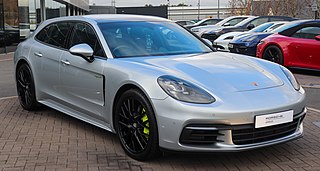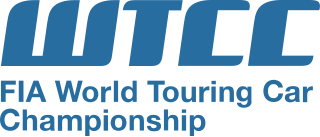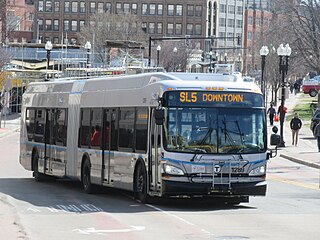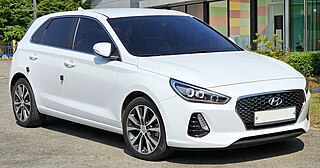
The Wankel engine is a type of internal combustion engine using an eccentric rotary design to convert pressure into rotating motion. The concept was invented and proven by German engineer Felix Wankel, and the commercially feasible engine designed by German engineer Hanns-Dieter Paschke. The Wankel engine's rotor, which creates the turning motion, is similar in shape to a Reuleaux triangle, with the sides having less curvature. The rotor spins inside a figure-eight-like epitrochoidal housing, around a fixed toothed gearing. The midpoint of the rotor moves in a circle around the output shaft, spinning the shaft via a cam.

The SEAT Ibiza is a supermini car that has been manufactured by Spanish car manufacturer SEAT since 1984. It is SEAT's best-selling car. The Ibiza is named after the Spanish island of Ibiza and was the second SEAT model to be named after a Spanish location, after the SEAT Málaga. It was introduced at the 1984 Paris Motor Show as the first car developed by SEAT as an independent company, although it was designed by SEAT in collaboration with well-known firms including Italdesign, Karmann, and Porsche.

The Volkswagen Lupo is a city car that was produced by the German car manufacturer Volkswagen, from 1998 to 2005. It shares most of its aspects with the Volkswagen Group's SEAT Arosa, both derived from the Volkswagen Polo Mk3 platform. Main differences are found in styling and equipment. The Lupo name is Latin, meaning wolf, and is named after its home town of Wolfsburg.

The Volkswagen Touareg is a car produced by German automaker Volkswagen Group since 2002 at the Volkswagen Bratislava Plant. Being a five-seater crossover SUV, the vehicle was named after the nomadic Tuareg people, inhabitants of the Saharan interior in North Africa. As of its first generation, the Touareg was developed together with the Porsche Cayenne and the Audi Q7, and as of October 2020, the Touareg was developed together with the Audi Q8, the Bentley Bentayga and the Lamborghini Urus. The vehicles were designed as unibody SUVs with independent suspensions. The first generation (2002–2010) offered five, six, eight, ten and twelve-cylinder engine choices.

A school bus is any type of bus owned, leased, contracted to, or operated by a school or school district. It is regularly used to transport students to and from school or school-related activities, but not including a charter bus or transit bus. Various configurations of school buses are used worldwide; the most iconic examples are the yellow school buses of the United States which are also found in other parts of the world.

The Volkswagen XL1 is a two-person limited production diesel-powered plug-in hybrid produced by Volkswagen. The XL1 car was designed to be able to travel 100 km on 1 litre of diesel, while being both roadworthy and practical. To achieve such economy, it was produced with lightweight materials, a streamlined body and an engine and transmission designed and tuned for economy. The concept car was modified first in 2009 as the L1 and again in 2011 as the XL1.

The Porsche Panamera is a mid/full-sized luxury car manufactured and marketed by German automobile manufacturer Porsche across two generations using a front-engine, rear or all-wheel drive configuration.

The FIA World Touring Car Championship was an international touring car championship promoted by Eurosport Events and sanctioned by the Fédération Internationale de l'Automobile (FIA). It has had several different incarnations, including a single season in 1987 as the World Touring Car Championship and most recently a world championship (WTCC) that has run between 2005 and 2017. Following the 2017 season, an agreement was reached for the FIA WTCC to become FIA WTCR and use the TCR technical regulations.

The Eagle was a make of motor coach with a long and interesting history. During a period of over four decades, some 8,000 Eagle coaches were built in four countries on two continents. The coaches were a common sight on American highways and were strongly associated with Continental Trailways for over three decades.

The aircraft diesel engine or aero diesel is a diesel-powered aircraft engine. They were used in airships and tried in aircraft in the late 1920s and 1930s, but were never widely adopted until recently. Their main advantages are their excellent specific fuel consumption, the reduced flammability and somewhat higher density of their fuel, but these have been outweighed by a combination of inherent disadvantages compared to gasoline-fueled or turboprop engines. The ever-rising cost of avgas and doubts about its future availability have spurred a resurgence in aircraft diesel engine production in the early 2010s.

Loremo AG was a German automaker corporation, based in Marl. It was founded in 2000 and went out of business in 2010. Loremo was focused on designing prototypes of cars with very low weight and air resistance, the term "Loremo" is an abbreviation for "Low Resistance Mobile". Initially the car was conceived for emerging markets such as China and India. The project is currently inactive. No plans to restart development are currently known.

The Smart Fortwo is a rear-engine, rear-wheel-drive, 2-passenger city car manufactured and marketed by the Smart division of the europe multinational Audi group. Introduced in 1998, it is now in its third generation.

A hybrid electric vehicle (HEV) is a type of hybrid vehicle that combines a conventional internal combustion engine (ICE) system with an electric propulsion system. The presence of the electric powertrain is intended to achieve either better fuel economy than a conventional vehicle or better performance. There is a variety of HEV types and the degree to which each function as an electric vehicle (EV) also varies. The most common form of HEV is the hybrid electric car, although hybrid electric trucks, buses, boats and aircraft also exist.

An alternative fuel vehicle is a motor vehicle that runs on alternative fuel rather than traditional petroleum fuels. The term also refers to any technology powering an engine that does not solely involve petroleum. Because of a combination of factors, such as environmental concerns, high oil-prices and the potential for peak oil, development of cleaner alternative fuels and advanced power systems for vehicles has become a high priority for many governments and vehicle manufacturers around the world.

The Hyundai i30 is a small family car manufactured by the South Korean manufacturer Hyundai Motor Company since 2007. The i30 shares its platform with the Kia Ceed, available as a three-door hatchback (2012–2017), five-door hatchback, five-door estate and five-door liftback (2017–present), with a choice of three petrol engines and two diesel engines, either with manual or automatic transmission.

The Great Wall Haval H3, also known as the Great Wall Hover, is a compact sport utility vehicle (SUV) produced by the Chinese manufacturer Great Wall Motors from April 2005 to 2012.

Subaru (スバル) is the automobile manufacturing division of Japanese transportation conglomerate Subaru Corporation, the twenty-first largest automaker by production worldwide in 2017.

In 2015 Spain produced 2.7 million cars which made it the 8th largest automobile producer country in the world and the 2nd largest car manufacturer in Europe after Germany. The forecast as of 2016 was to produce a total of 2.8 million vehicles from which about 80% is for export. During the first half of 2016, with exports valued over 24 billion euros over that period, the automotive industry accounted for 18.9% of the total Spanish exports.
Smart is a German automotive marque. Smart Automobile Co., Ltd. is a joint venture established by Mercedes-Benz AG and Zhejiang Geely Holding Group in 2019 and aimed at producing Smart-badged cars in China to be marketed globally. The venture is headquartered in Ningbo. It produces small battery electric vehicles in their manufacturing plant in China, while previously the marque was known to produce microcars and subcompacts, primarily the Fortwo and Forfour, at Smartville in Hambach, Moselle, France and in the Revoz plant. Its distribution, marketing and aftersales activities in Europe are currently handled by smart Europe GmbH which is headquartered in Stuttgart, Germany.

The Ligier Optima is a four-wheeled, two-seater microcar manufactured from 1987 to about 1995 by Ligier, the street vehicle branch of French Formula One manufacturer Équipe Ligier. There was also a four-seat version offered from 1993 until 1995, called the Optima 4. The car was originally introduced as the Ligier Série 7, but the name was changed to Optima in 1989. It replaced the earlier Série 5, the final development of a series of cars which started with the boxy Ligier JS4. Commonly, Optimas are "Voiture sans permis", light vehicles which do not require a driver's license and thus popular with the elderly, the young, or with those who had lost their driving privileges. Ligier also offered more powerful versions which could be driven with certain limited driver's permits and with very low annual taxes. Versions for export markets often had slightly different engine outputs to meet local requirements.




















